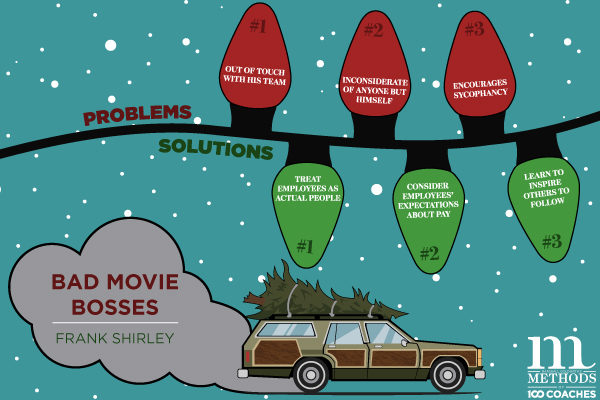Modern companies, particularly those in the tech realm, often put an enormous amount of care into developing and realizing the full potential of their customer’s experience while using their product—also known as “user experience” or “UX” for short. You can think of it as a customer’s journey of using your product or service. UX professionals are constantly asking, “How does it feel for a user to use this product? What is going through their minds?” Tech companies like Facebook and Twitter are constantly redesigning their platforms, tweaking little things here and there to try and create the ultimate user experience. For most people, this looks like: intuitive ease of use, accessibility features, and cross-compatibility with other applications in the ecosystem. It’s not just apps, either. It’s the way you feel when you walk into a store: the way the products are displayed, the smell, the music coming from the loudspeakers; all these things are human-centered design principles applied to establish that connection in your mind with a particular brand or store.
“The goal of good UX is to help users do what they want to do when interacting with your business.”
-Roxanne Pinto, UX writer and content strategist at Google
While most companies care deeply about UX, the question remains, do they do the same for the employee experience, or “EX”? Employees want to have a good experience at work. They want their work to mesh with their lifestyle and their own goals, and they don’t enjoy processes or other barriers that hold them up from getting their job done. So what does the journey of being an employee at your company look like? What could be done to improve employee retention, overall job satisfaction, and day-to-day productivity? These are all questions that you should be asking yourself and your team so that your organization can offer the best possible experience for current and future employees. Unfortunately, a lot of companies don’t put much thought into this outside the bare minimum, perhaps because the conversation around UX has become so overwhelming that we forget the people behind the screens, behind the apps, behind the products—the real human engines driving businesses forward.
Here are a few tips for how to create a better EX for your team.

1. Teach people how to use the tools you provide them.
If this sounds obvious to you, you may want to think again. With the last two years seeing a bigger change in the work-world than almost ever before, we all rushed to adopt new digital systems to cope with the surge of remote work. In doing so, we started using new programs, new services, and new apps, all of which had to be taught to the employees that would be using them. How many times have you heard someone on your team complaining that they don’t know how to use a particular software or app, and seem to always have trouble? Probably often. The trouble is when this frustration turns into a refusal to even use the service because of the time and effort it takes away from that person’s normal activities. This can compound further by creating inconsistencies amongst teammates who use the programs and apps in different capacities. In a truly high-functioning organization, everyone should be using these tools all together in the same exact ways. A solution to this is more training; any time you adopt a new system, make sure you implement an extensive (and ongoing) on-boarding and training program to ensure everyone is comfortable using the tools provided to them to their fullest extent.

2. Create an employee “journey” like you do for customers.
What happens when someone is hired at your company? What would you, as the boss, like them ideally to do? When designing for UX, we’ll often make a literal “map” of the customer journey on which we hope each user will venture. By making one for employees, you can foresee how and where someone will advance through the company, and the steps needed to make that ascendance. In addition to the long-term path you hope each employee will follow or forge at your company, examine how you can improve their experience in the short term. Consider asking what a day in the life of an employee looks like. How do they start their day? What is their commute and its challenges? Do they come in stressed from the drive and traffic? Do they walk through a bustling office space to get to their desk? How might this impact their flow? When they go to use a tool such as a printer, does it work consistently or cause frustration? Are there lunch options nearby or do most employees pack a lunch from home? The seemingly small and unrelated things can have a big impact on the overall mood and effectiveness of a person’s workday. Taking these details into account will help you form a big-picture view of the current employee experience, and highlight ways you can mold it to meet your team’s needs as well as your company’s goals.

3. Focus on your employee’s wellness and career.
This can be done in a number of ways, through gym membership and other wellness benefits, increased time off, and career development plans. You need to invest time and energy into making sure each employee is as satisfied in their job and role as possible. If you’re not sure what it is your employees are missing, send out a survey for them to review their employee experience and just ask them! The key with this is actually IMPLEMENTING the feedback you get from your teammates, and not just letting it go in one ear and out the other. Listen to what your people have to say—they will tell you what they need.

The field of UX is booming, and the innovation is staggering. As UX designers develop new techniques to create the best, pain-free experiences for customers, businesses would be wise to use what we have learned in this industry to build a better employee experience as well.
If you struggle with employee retention, or employee satisfaction, you might want to try employing some of these tips to help make it a better experience for everyone who works on your team.
Start your EX plan by learning from the best business and leadership minds in the world. Sign up for a Methods of 100 Coaches membership today.
Want to train your whole team? No problem, request a Methods of 100 Coaches for Teams demo to learn the benefits of a team membership.
Sources of Inspiration:
- Applying UX principles to EX: Enhancing the employee user experience
- 10 ways to improve employee experience at your company
- What Does UX Have to Do With Employees? Everything
- 4 simple steps to designing a strong user experience
- Design Your Employee Experience as Thoughtfully as You Design Your Customer Experience
- Why you should apply design thinking to the employee experience





